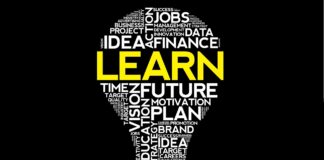“Their business model was destroyed by digital photography”
Human beings, by and large, are notorious for staying with what is familiar to them and not wanting to ‘rock the boat’, instead chasing the familiar quick fix, the easy option, that which feels safe and comfortable.
‘Why not get as much out of today as I can and to hell with the future’. Boom and bust mentality.
‘We’ve always done it this way, no need to change’. Staying in our comfort zone mentality.
‘If it’s not broken, why fix it?’ Not keeping an open mind to new innovations, ideas, challenges, etc.
Sound familiar?
Well, this approach didn’t go well for Kodak.
Their business model was destroyed by digital photography and the irony is they invented the digital camera in 1975. Why? One of the reasons was Kodak’s senior management were stuck in time and were myopic. As the Wall Street Journal reported, “They never fully grasped how the world around them was changing. They hung on to now obsolete assumptions about who took pictures, why and when. Kodak always thought that people would never part with hard prints and that people valued film-based photos for their high quality. In other words, they saw digital as a direct substitute for film based photography.”
In 2013, hundreds of thousands of people lost their livelihoods and with that went over 125 years of history – most of which was defined by amazing innovations and many memorable ‘Kodak moments’ for people and families all over the world. What a waste of opportunity, talent and fortune.
By not stepping back and looking at our businesses from all angles, challenging preconceived ideas and exploring what’s possible and how our markets, clients, society and environment are changing on a regular basis, we are putting ourselves and our companies at risk of creating our own Kodak moments. With obsolescence the only option.
But it doesn’t have to be this way.
A Selling Better Case Study
It’s with this backdrop that I want to share with you a case study about a very large, by Australian standards at least, publicly listed company that was staring into the abyss of rapidly declining sales and share price, unhappy customers and a business and operations model that was just not working as it was supposed to.
There had been several attempts to ‘right the ship’ by a previous leader; however, these attempts were more decorative in their approach and did not invoke the fundamental changes required for the necessary changes in the marketplace or create the right business and sales strategy, the value proposition, the offer, the sales force structure, sales operational framework and so on.
In late 2017 I met with the newly appointed leader of this business. He had been with the business for some time but in finance, not sales and he knew things weren’t right. He was looking for options and a better way forward that would secure the business for the future. But where to start, what to do?
I listened to him for 90 minutes as he explained his dilemma, priorities, goals and objectives. I asked questions in order to stake out the various concerns of his – from business and sales strategy, sales team structure, market segments, ideal clients, backend operations, culture, and trends.
There was a lot to consider and it wasn’t going to be a quick fix. We agreed that we needed to rethink the whole way this business went to market and how it operated. We agreed that he needed to get everyone on board, not just the sales team, if the business had any hope of resetting itself as the business could and moving forward successfully.
Begin with the end in mind
So we looked forward to the future and imagined what an ideal state would look like:
- Implementation and execution of effective sales strategies that delivered real value and sustainable competitive advantage;
- A business culture and reputation built on trust, engagement, commitment and high performance with all employees, clients and suppliers; and
- A sales system that develops sales mastery, and minimises sales execution risk and operational risk to deliver consistent and sustainable revenue and growth
- Leading to happy, engaged and satisfied staff, customers and suppliers
- A partner of choice
This was a change management programme beyond the traditional sales training formula.
We acknowledged that this was a company-wide initiative that would pivot the business into a new and better direction. So we needed buy-in from the start. We knew that this would cause disruption, change and potentially put some people’s noses out of joint but everyone was invited to participate and have their say.
There was no turning back, this was necessary in order to avoid the Kodak Moment of failure.
Clarity, Communication and Consistency are key to building Trust, Commitment and Results
Here are some of the steps we took:
- A sales strategy & operations audit to benchmark all the elements affecting sales and service, customer engagement and results: this was, in short, a major risk assessment. People from all areas of the business were asked to participate in the audit and then, using the results, the executive leadership team unpacked every area and developed a go-to-market strategy that would deliver a compelling value proposition (and real value) to the company and their clients alike. A detailed action plan was designed that addressed many areas of the business and what it had to do in order to deliver on its promise to clients and shareholders. This created Clarity – clarity of purpose, expectations, direction, areas of accountability and a long term plan of strategic intent.
- Change Management Plan: this included branding the new project, creating a project team, mapping and building out sales processes (how we sell around here) and tools and resources, refined market segmentation and localised go-to-market action plans, a learning and development plan including delivering the right content to the sales team, sales leaders and broader business about ‘how we sell around here’, communication plan so that everyone across the business knew what was happening, when, and why. This delivered Consistency in terms of standards and execution and Communication by keeping everyone involved and interested in how they were making a difference.
The work is still continuing and there are more people to engage directly across the business but results are very promising.
With clarity of purpose and direction underpinned by a stable sales operating framework the business has achieved a number of things:
- Quick profitable wins: By resetting the sales team structure, resetting the strategy and up skilling the sales team have been able to identify and engage with the right kinds of businesses which have already started to deliver over $200M per annum of new revenue from new clients within 2 months of launch plus all the repeat business they are now able to retain more easily.
- Ditch unprofitable clients: Upon examination senior management made the decision to let go of a very large client who was not profitable, took up too many resources and was very difficult to work with; this was a brave move; however, it freed up an enormous amount of working capital and time which could be redirected immediately to more profitable business. The shortfall of immediate revenue loss has been quickly made up by winning over better quality clients.
- Long term view: As I mentioned, it’s not been easy but with the leaders determined to deliver their over-arching strategy based on sound logic and business economics, the business has been able to weather the storm of short-termism by news outlets and shareholders and stay the course for positive change.
Remember everybody lives by selling something.

































